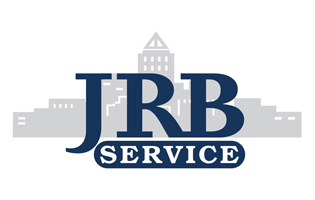How to Follow the Heat Trail to Energy Waste
A lot of energy wasted is temperature related. Cold or hot air leaks from a building are very common. It took energy to condition that air, and when it dissipates due to a leak, you’ve lost that energy. However, many pieces of equipment and other systems, when they are operating inefficiently, manifest their wasted effort-energy as heat.
How to Detect Abnormal Temperatures
 Thermal Imaging is a technique used to spot abnormal temperatures and follow the heat trail to energy waste. An infrared camera scans the temperature value of objects. The camera screen uses color to represent temperature and software to set performance and benchmark alarms.
Thermal Imaging is a technique used to spot abnormal temperatures and follow the heat trail to energy waste. An infrared camera scans the temperature value of objects. The camera screen uses color to represent temperature and software to set performance and benchmark alarms.
Keeping Your Commercial Property Energy Efficient
A standard scan can show energy saving opportunities of up to 15%, with varying degrees of repair investments. We recommend inspecting the following systems to identify energy losses:
HVAC Units
An HVAC (heating and cooling) system is usually one of a building’s largest energy users. HVAC systems consume 30% of the energy used in a commercial or industrial building. One of the most common causes of energy loss occurs through outdated equipment or equipment that is not operating correctly. It is estimated that 33% of all heating and cooling energy is wasted by leaking duct work joints.
Building Envelope
A building envelope is a physical separator between the conditioned and unconditioned environment of a building, including resistance to air, heat, light, noise transfer, and water.
Roof: Make sure the roof or attic area has adequate insulation.
Doors and Windows: Doors and windows must fit properly and have weather-stripping installed to help prevent A/C from escaping. Also, wall penetrations, including door and window frames and glass, should be sealed where the frame meets the exterior wall surface to reduce air loss.
Walls: Having a well-insulated wall will increase your energy efficiency and decrease noise pollution. Don’t forget to insulate the exterior of the walls for better results.
Electrical Systems
Lighting accounts for 30% of energy consumption in a commercial building. By upgrading or replacing your electrical systems, such as electrical panels, meters, and light bulbs, you can considerably reduce your electricity costs.
By decreasing the amount of energy utilized in a building, the cost to operate it is reduced. Furthermore, many energy-efficient upgrades can pay for themselves over time.
Leak Investigation on Commercial Glass & Aluminum Extruding
Call JBR Service to inspect your commercial building. We have professional and certified technicians to perform a wide variety of industry tests, including water and air infiltration tests, to determine the exact location of leaks on your commercial glass and aluminum extruding. We will provide a full documentation report with an estimate for repairs.
Is Your Commercial Building Energy Efficient?


